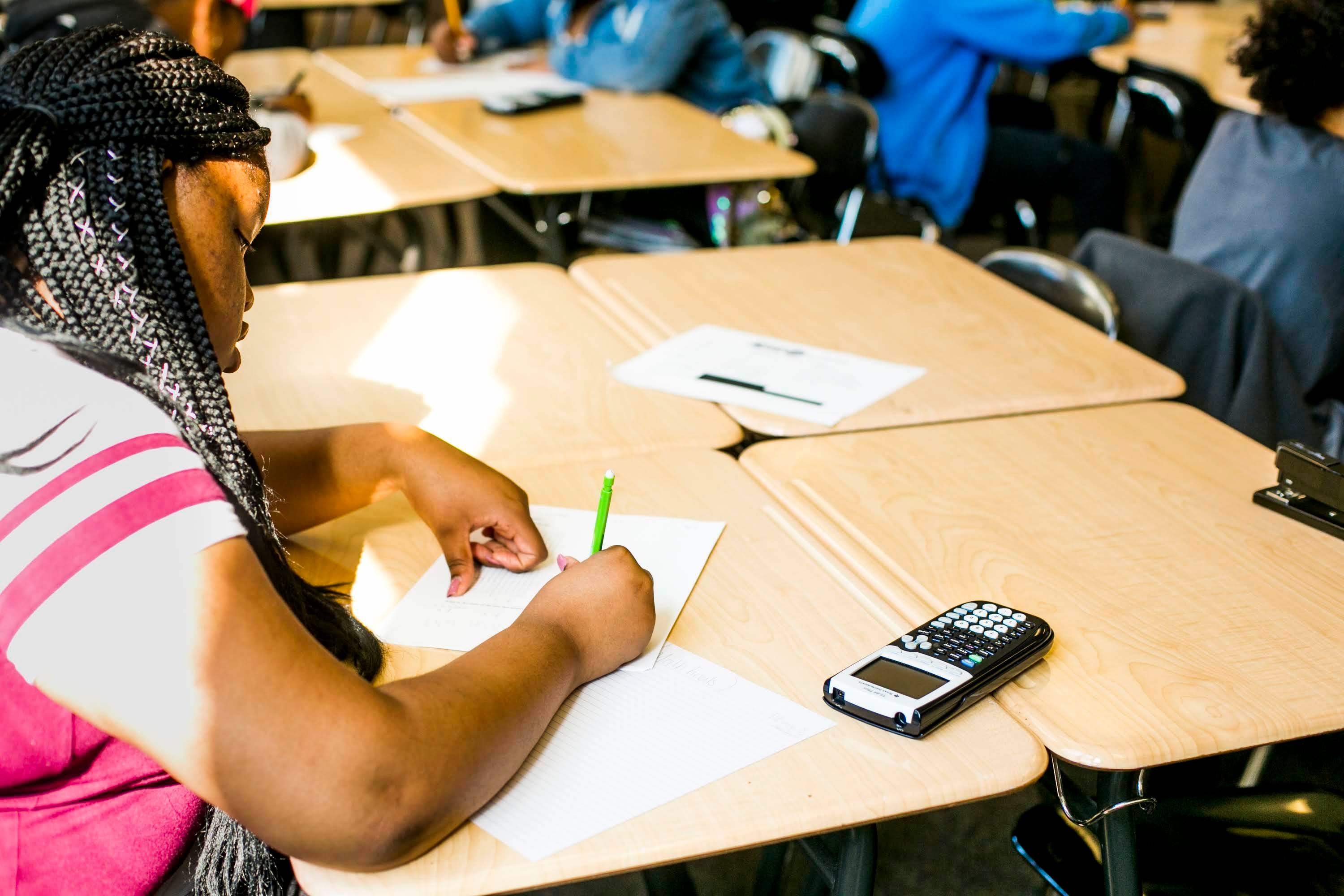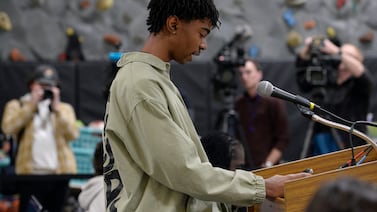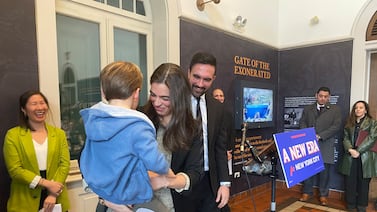Whether a student can play a sport, study advanced math, or sing in a choir varies widely by where they attend school, Indianapolis Public School officials said Thursday at the latest in a series of meetings that raise the possibility of closing some schools.
They described the financial and opportunity costs of operating small neighborhood schools, which are stretched too thin to offer as many enrichment programs as larger schools, and often leave Black and Indigenous students without access.
Previous meetings about reorganizing IPS have highlighted facilities in need of $466 million in repairs, an enrollment decline of 6 percent over 3 years at neighborhood schools, and a budget deficit that could grow to $25 million by 2027.
The solution may be merging small schools — which would mean closing one or more in the process — according to the meeting materials.
But district officials remain reluctant to say whether closures are on the horizon.
“I think anything’s on the table right now,” said Andrew Strope, IPS chief of staff. That includes renovation and new construction.
A final reorganization plan will be presented in the fall, with one more presentation in June to review the findings of the spring series of Rebuilding Stronger meetings.
Previous meetings have reviewed the district’s facilities, enrollment, and finances. Thursday night’s meeting on students’ access to sports, arts, and advanced math was the most well-attended, Strope said. About 50 people participated, including many members of a committee charged with advising the district on a path forward.
“We’ve all been students. We’re parents. Student experience is something we can all connect with,” Strope said. “We think about facilities and financing and all that, which is important, but it also supports the student experience.”
The uneven distribution of extracurricular activities is especially acute for Black and Indigenous students, who have access to fewer enrichment programs in middle school, according to district data. The disparity also affects neighborhood schools, which offer half as many enrichment programs as choice schools in the middle grades.
Parents and teachers who attended the meeting agreed that something needed to be done to improve the trajectory of the district. But it’s hard to determine what exactly that should be, they said, when many possible solutions come with tradeoffs.
If a neighborhood school closes, some families simply would not be able to make a longer commute to a new school, said Michelle Pleasant, a George Julian School 57 parent.
To loud applause, Pleasant said she’d like to see the district invest in new programs at its existing neighborhood schools in order to offer families an attractive option to charter schools.
Doing so would encourage community buy-in, and potentially have a positive impact on enrollment, she said.
“You can have all these offerings, but if kids can’t get there, who is accessing these extracurricular activities?” Pleasant said. “If you have a choice school that’s 30 minutes away, and you get bused to school but you don’t have transportation to get there for an after-school activity, what does that look like?”
Small schools can also serve students who need specialized learning, said Shawanda Tyson, a parent and advocate with Stand for Children Indiana.
Tyson said she hopes the district considers those needs as it moves forward, possibly by housing students who thrive in smaller environments in academies within a larger school.
Tyson also encouraged the district to provide clearer data for parents and others who don’t work in education.
Lena Dickerson, who previously criticized the district for not involving parents like her in the decision to close Ignite Achievement Academy, said officials have done a much better job this time of inviting parents to give input. Her questions from each meeting have been answered at the next presentation, she said.
“It makes me know that this is not just a formality,” she said. “It’s a process.”
District employees noted that IPS has tried reorganizing before, such as when it shuffled grades at the John Marshall school building. Most recently, the district closed Joyce Kilmer School 69.
Strope, the chief of staff, said the Rebuilding Stronger campaign is about creating a consistent, long-term plan, rather than a rebrand.
But Tina Ahlgren, an IPS Teacher of the Year in 2014, said that shuffling students and teachers means disrupting school cultures yet again.
Ahlgren said that in 15 years with the district, she has experienced dozens of changes meant to improve schools — name changes, program shifts, and state takeover. This time, she said she hopes the district picks a path and sticks with it.
“I feel like we really are this time trying to look at everything and have a cohesive response,” Ahlgren said. “Before it’s been very patchwork. ”
“We pick something, and the first year it doesn’t work out, OK — new plan. We don’t let it play out,” added Monica Shelhammer, a teacher at Christian Park School 82.
Enough time to implement a new plan will allow teachers to develop high-quality programs that come with experience, Ahlgren said, noting a highly successful German language program helmed by a veteran teacher.
“Some of the best programs I’ve seen are … staff-driven, and consistent staff-driven,” she said. “No one walks into a school their first year and says, ‘I’m going to create this really cool program.’ ”
Aleksandra Appleton covers Indiana education policy and writes about K-12 schools across the state. Contact her at aappleton@chalkbeat.org.





